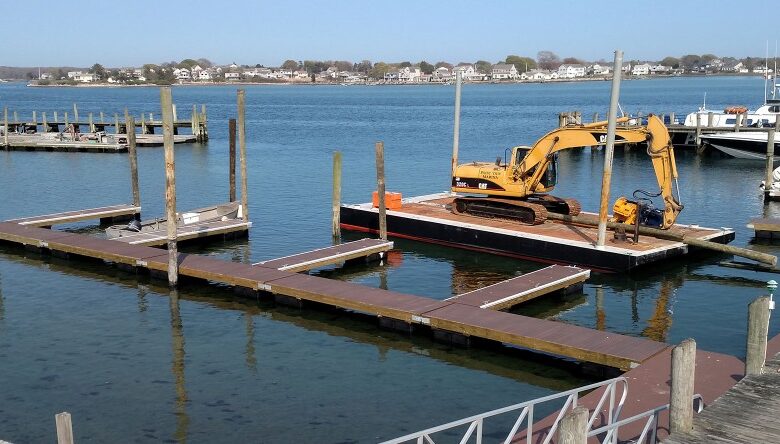Building a Dock? Here Are the Essential Things to Consider for a Successful Project

Building a dock is a big investment that can enhance your waterfront property for years. It can provide a space for fishing, swimming, and relaxing with family and friends. However, several things must be considered before construction to ensure a successful project. Here are the things you must remember when building a dock.
Permits and Regulations
Before starting a dock building project, obtaining the necessary permits and adhering to any regulations or guidelines set by your local government is crucial. Most properties require a shoreline permit or the Department of Natural Resources (DNR) approval. Failing to comply with regulations can lead to fines or even legal action, so it’s essential to research and obtain the necessary permissions before beginning construction. With the help of an experienced local contractor like Top – Notch Dock Building, you can navigate the permitting process and move forward with your project.
Location
The location is one of the most critical factors when building a dock. You want to choose a spot sheltered from the wind and rough water, away from boat traffic, and in a suitable water depth for your desired activities. Consider the sun’s angle and impact on the dock’s shade during the day.
Dock Type and Materials
The type and materials of your dock depend on your needs and budget. There are two primary dock types: floating and stationary.
- Floating docks are a game-changer for water enthusiasts seeking a convenient and adaptable docking solution. They offer an incredibly versatile option for those living in areas with fluctuating water levels, something that fixed docks cannot provide. Additionally, the ability to remove them during the off-season is a major convenience.
Why stress over the daunting task of winterizing a dock when you can remove it easily? Not only do floating docks provide convenience, but they also offer a safe and stable platform for all your water-related activities. No matter the season or water conditions, floating docks are here to make your life on the water a breeze.
- Stationary docks are more durable and require lower maintenance but a fixed location. While they need a selected location, the benefits of using a stationary dock outweigh any inconvenience. The materials for constructing these docks include wood, composite decking, and aluminum.
Each material has unique advantages, such as wood’s natural look, composite’s resistance to water damage, and aluminum’s lightweight construction. With the proper care, stationary docks can provide a reliable and long-lasting platform for years.
Each material has benefits and costs, so research and choose the one that best suits your needs and budget.
Accessories
Accessories can enhance your dock’s functionality and aesthetics. Consider adding features such as:
Electrical Outlets: Electrical outlets to your dock can provide power for lights, radios, and other items you may want to use on your boat or at the dock. Ensuring the outlets are properly installed and grounded is important, as this will help prevent electrical shock.
Lights: Installing lights on your dock can provide illumination when you’re out on the water after dark and can be decorative. Several types of lighting options are available, such as solar-powered LED lights or rope lights that can be strung along the edges of the dock.
Benches: Adding benches to your dock is a great way to create an inviting space where people can sit and relax while enjoying the view or the sun. Benches come in various materials and styles, so you’ll be sure to find one that fits your needs and complements the overall look of your dock.
Swim Ladders: Swim ladders are essential for docks near bodies of water since they provide an easy way for people to get in and out safely. Several types are available, including permanent ladders that attach directly to the side of the dock or portable ladders that can be removed when not in use.
Bumpers & Cleats: Bumpers protect boats from damage by providing a cushion between them and other boats or objects around them, while cleats secure boats by offering something to their ropes or lines to attach to.
Maintenance
Building a dock is a major investment that requires careful planning and execution. While most people focus on the design and construction process, they often overlook the importance of regular maintenance. A well-maintained dock can last for decades, but neglecting it can lead to costly repairs and safety hazards. That’s why dock restoration is crucial to owning a waterfront property.
By scheduling regular inspections and cleaning, you can ensure your dock is in tip-top shape and ready to withstand the elements. From tightening bolts to power washing debris, a little bit of TLC can go a long way in extending the lifespan of your dock. So, if you want to enjoy your waterfront paradise for years to come, prioritize maintenance and Dock Restoration Charleston SC.
In conclusion, building a dock can be an enjoyable and thrilling project. With proper planning, research, and implementation, your dock can provide a space for relaxation and fun-filled water activities. Consider all the critical factors before starting the build, from permits, location, dock type, and materials to accessories and maintenance. Considering these factors, you will surely have a successful dock-building project.





